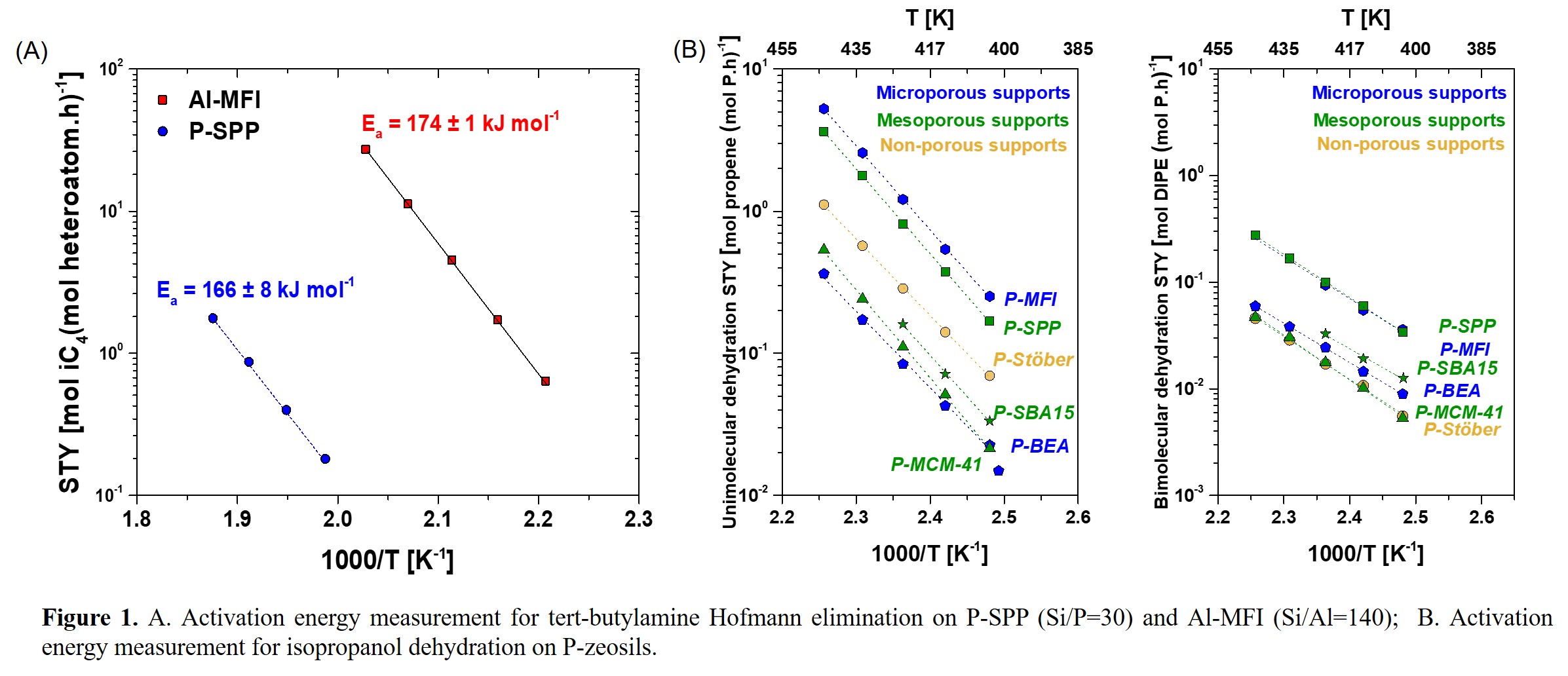(228g) Characterizing Acid Sites of Phosphorus-Containing Zeosils
AIChE Annual Meeting
2022
2022 Annual Meeting
Catalysis and Reaction Engineering Division
Catalyst Design, Synthesis, and Characterization IV: Zeolites
Tuesday, November 15, 2022 - 9:48am to 10:06am
Numerous researches have been devoted to tuning the acid strength of Brønsted sites of zeolites by substituting Al with other heteroatoms, among which phosphorus has received tremendous attention. The synthesized phosphoric acid-supported all silica zeolite (P-zeosils) contains acid sites with weaker acidity that offer a higher selectivity towards multiple acid-catalyzed chemistries, especially dehydrations relevant to biomass upgrading, although at a cost of reduced kinetics. Unfortunately, the characterization work on the structure of acid sites in these phosphorus-containing catalysts are limited and inadequate for guiding further advances in catalyst design. To understand the kinetic nature of their acidic active sites, we synthesized a series of phosphorus-containing zeosils with varying zeolite structures, and we demonstrate that P-zeosils are Brønsted acidic in nature through a combination of temperature programmed surface reactions, probe molecule spectroscopy and computations. By using alkylamine Hofmann elimination and alcohol dehydration as probe reactions, we carried out kinetic measurements to investigate the acid sites in P-zeosils and compared that with the parent aluminosilicate zeolite catalysts. Identical activation energies of Hofmann elimination of tert-butylamine were found over P-zeosils and aluminosilicates, despite the significant difference in the acidities (Figure 1A). This is attributed to the complete proton transfer from the Brønsted acid site (Si-OH-Al or P-OH) to the adsorbed alkylammonium ion, and thus the catalytic cycle is insensitive to the identity of the formed conjugate base. However, during the isopropanol dehydration, it was found that the weaker Brønsted acidity of the phosphorous acid sites leads to weaker binding of reaction intermediates, which significantly affects the reaction energetics. Moreover, lower apparent activation energies were observed over P-zeosils relative to aluminosilicates in spite of their lower catalytic rate (Figure 1B), which could be rationalized by taking the less favorable adsorption of alcohols and their reaction intermediates over P-zeosils into account.


